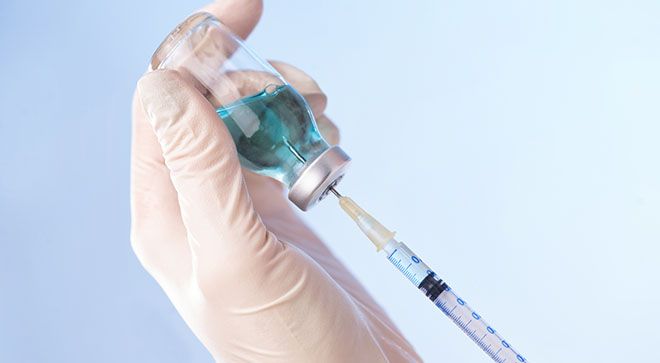News
Article
‘Another Option Available’ for Treatment in Follicular Lymphoma
Author(s):
Treatment with Brukinsa and Gazyva poses a new option for certain patients with follicular lymphoma, with tolerable side effects, an expert told CURE®.
Brukinsa and Gazyva is now a new combination in the "toolbox" of regimens for some patients with follicular lymphoma.

Certain patients with relapsed or refractory follicular lymphoma who have previously received two or more lines of therapy “now have another option available to them, [which] I think is very important,” an expert told CURE®.
The treatment combination of Brukinsa (zanubrutinib) plus Gazyva (obinutuzumab) was granted accelerated approval by the Food and Drug Administration (FDA) for patients with relapsed or refractory follicular lymphoma who have previously received two or more lines of therapy.
Brukinsa is a type of BTK inhibitor, which is a drug that blocks the BTK protein and in turn, prevents the growth of cancer cells in blood cancers, including types of lymphomas and leukemias, the National Cancer Institute defines.
The drug combination was reviewed by the FDA in July 2023 for the same patient population.
A New Available Treatment Option
“In the field of malignant hematology, it's very important to continue [having] medicines available for patients and options available for them that are safe and tolerable,” said Dr. Mehrdad Mobasher, chief medical officer of hematology at BeiGene, the manufacturer of Brukinsa. “And this is an accelerated approval from a phase two study that actually shows the two medicines that we put together — Brukinsa plus Gazyva — really gave a lot of patients responses.”
The phase 2 ROSEWOOD trial, which led to the approval of Brukinsa plus Gazyva, included approximately 217 patients who had relapsed or refractory non-Hodgkin follicular lymphoma, according to ClinicalTrials.gov.
Patients were randomly assigned to one of two cohorts: one with Brukinsa plus Gazyva or one with Gazyva alone. The data from the trial reflected that approximately 69% of patients in the Brukinsa plus Gazyva cohort were still responding to the treatment regimen at 18 months.
Although the FDA granted accelerated approval to the drug combination, Mobasher noted that “a bigger study needs to be done,” which will help researchers determine more about the safety and efficacy of the regimen over a longer amount of time.
“This study was actually a relatively large phase 2 study and it was randomized. So this gave the FDA good confidence in terms of its efficacy in follicular lymphoma,” he said.
Unmet Needs Addressed and Those That Persist
Mobasher emphasized that the advancements within the blood cancer space over the past decade provided patients with “several [available] treatment options,” but also recognized that every patient “has different needs.”
“Follicular lymphoma, which is an indolent lymphoma, are not [curable], meaning that [patients] have [disease] progression and with each progression comes needs for a new treatment,” Mobasher said. “The most important part of it is that in our toolbox, now we have another regimen that we can offer for former patients, whether they have two progressions or three progressions.”
However, Mobasher noted that the blood cancer space will continue to have an unmet need because a cure for this patient population is not possible.
“We will continue to work on making sure that we have changed the treatment landscape and we have treatment options for patients for frontline treatments,” he said.
READ MORE: Drug Combos May Help Lower Blood Pressure in Patients Taking Imbruvica
Side Effects from Brukinsa Plus Gazyva
Because both Brukinsa and Gazyva have been previously FDA-approved for other cancer types, including other blood cancers, all of the reported side effects from the ROSEWOOD trial were expected and consistent with prior knowledge regarding the two drugs, Mobasher said.
“In general, this class of drug can lead to some blood cell reductions, which [doctors] are very familiar with, including low white blood cell count, that they can check and treat,” he explained.
Mobasher also reported that Gazyva may cause some infusion-related reactions.
“But, the one nice thing was that when we combined Brukinsa and Gazyva, the rate of infusion-related reaction was decreased,” he added. “That’s why sometimes these combinations are better because they work in different ways that decrease side effects.”
For more news on cancer updates, research and education, don’t forget to subscribe to CURE®’s newsletters here.




